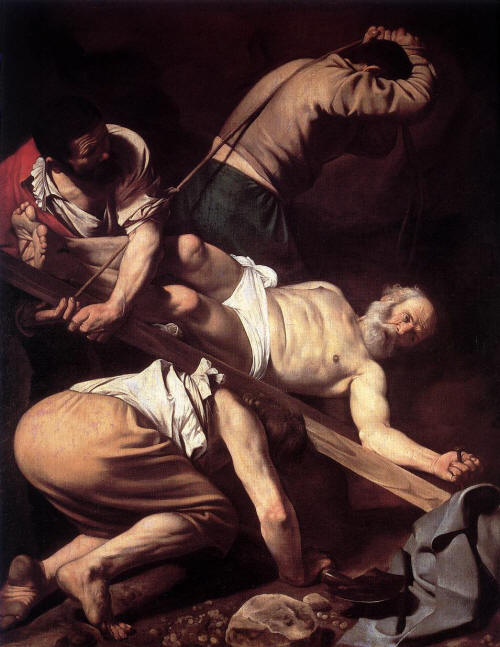
Crucifixtion of Saint Peter, Caravaggio,
1600-1601, Santa Maria del Popolo, Rome |
At the end of his
pontificate Innocent III promulgated a decree at the Fourth Lateran Council
(1215) that laid down extensive rules about how and when an ecclesiastical
judge could prosecute criminals under his
jurisdiction. This conciliar
canon, Qualiter et quando
(c.8), established basic rules for ecclesiastical judges to investigate and
punish criminal clerics. Its provisions were based on a number of earlier
decretal letters that Innocentís curia had sent in answer to questions that
judges had posed about the rules governing court procedure. In Qualiter
et quando two biblical passages justified Inquisitio: Genesis
18:21 and Luke 16:2
Genesis 18:21 "Descendam et videbo utrum clamorem qui venit ad me, opere
compleverint, an non est ita, ut sciam."
Luke 16:2 "Et vocavit illum, et ait
illi: quid hoc audio de te? redde rationem villicationis tuae." |
